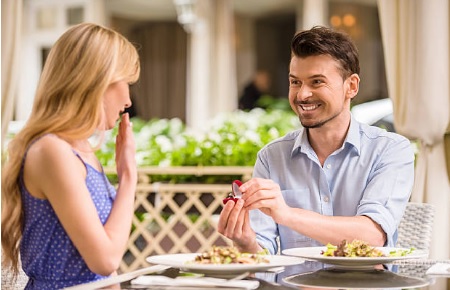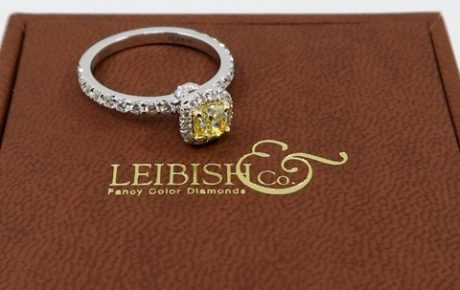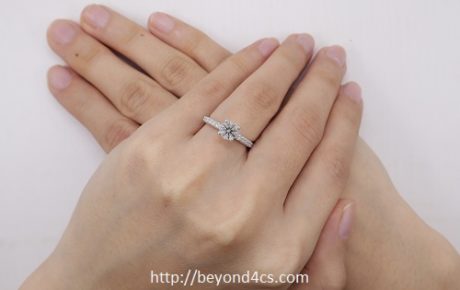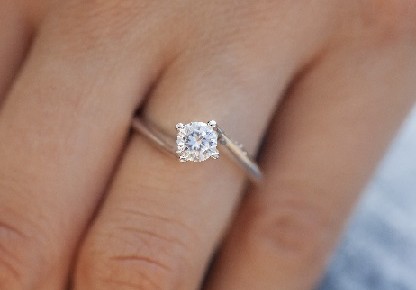D Color Diamonds – Are They Really Better & Worth the Price?

We performed various video comparisons of different diamond colors below!
Did you know that colorless diamonds (D, E, F) are rare in nature and they only make up less than 1% of the world’s supply of diamonds? In fact, D color diamonds are highly sought after because they are perceived as the “perfect” color for an engagement ring.
Due to their popularity, I often get asked questions like: “Is it worth it to buy a D diamond?”, “What is a D colored diamond?” and “What are the differences between a D and a G color diamond?”.
In this article, we will take an indepth look at D color diamonds and provide you with answers to the questions above.
Also, I had performed detailed comparisons of a D colored diamond ring against other color grades under everyday environments. Make sure you check out the full-length videos to find out whether you can see any visual differences between them in real life.
What is a D Colored Diamond?

The GIA color grading scale from D – Z.
When diamonds are color graded in the laboratory, they are flipped over and assessed based on the absence of color in the face down view. They are then assigned a corresponding grade from an alphabetical scale of D-Z.
The D grade represents a diamond with completely no color and an icy white appearance. On the other end of the spectrum, a Z grade represents a diamond with a visible yellow tint.
Now, I do want to point out that the color distinctions between individual grades are actually very subtle (e.g. D vs E) and are almost invisible to the naked eye. Yet, these nuances in color can result in large differences in the price and value of a diamond.
How Does a D Color Diamond Engagement Ring Looks on the Hand?
For people who want to know how a D diamond ring looks like when worn on a finger, watch the video below. FYI, I’m modelling my own hand and being Asian, my skin tone has a yellowish hue which gives the icy white appearance some contrast.
To be honest, I like the icy white and transparent nature of the D color. It is a feature that is nice to have if money were no object.
Depending on your own vision acuity, you will probably have a hard time deciphering color without another ring beside it as a reference.
Comparison of D vs H vs K Diamond Color Rings
If you had been shopping around for an engagement ring, you will quickly realize the majority of vendors only sell diamonds between D to K colors. The main reason is that colors beyond K have visible hues and there is little consumer demand for them.
To see how the diamonds look like in real life, watch the following video comparison using diamonds across the spectrum of colorless, near colorless and faint yellow grades.
I’ve also performed side-by-side comparisons of the D diamond ring against other common colors in the GIA grading scale as well. Check them out below!
Comparison of Colorless D vs E Color Diamond Engagement Ring
Comparison of Colorless D vs F Color Diamond Engagement Ring
Comparison of D vs I Color Diamond Engagement Ring
How Much Does a D Color Diamond Cost?
Being the rarest color in the range of colorless diamonds, you can expect D colored diamonds to be a lot more expensive. Here, I want to highlight that the price premium increases exponentially with carat weight.
For example, a 5 carat D internally flawless diamond can cost up to 300% more than a 5 carat H internally flawless diamond. But, a 1 carat D internally flawless diamond may cost up to 100% more than a 1 carat H internally flawless diamond.
To give you an idea of how much a D color diamond would cost, I’m going to show you a table based on various specifications a typical consumer would shop for.

Price comparison chart of diamonds with various carat size, color and clarity ratings.
As you can see, there are substantial price differences between D color diamonds and lower color grades. And this amount translates into large sums of money when we are talking about bigger sized stones.
Also, feel free to perform your own price comparisons between the various grades. Click here to visit James Allen and start browsing for yourself.
Should You Buy a D Colored Diamond And Is it Worth Its Price?

Well, it depends on who you ask and your individual preferences.
Obviously, if you are someone who has a very keen sense of color acuity and are able to detect the small nuances in color better than most people, you probably want to get the best color grade for your diamond engagement ring.
Also, if you are someone who expects the best of the best and psychologically think that nothing less than a D would satisfy your enjoyment of the diamond, buying the best possible D color would make sense.
On the other hand, there are those that would argue that an E or a G color diamond can look just as good without the higher price tag. I happen to be one of these people who shop with a practical mindset.
If you haven’t yet, make sure you watch the video comparison of the various colors and see if you can detect differences for yourself. If you cannot see a big difference between a colorless and near colorless diamond, then I would argue there’s no point in paying a price premium for a D.
Hopefully, this article has given you some food for thought. Now, I would love to hear from you. Can you see color nuances between the different grades? Would you pay the premium for a D diamond color or would you be happy with a lower color grade?
Leave a comment below!
Related Articles
Leave A Comment














9 Comments
Would you recommend setting a D or E diamond color stone in a yellow gold setting?
Personally, I won’t do that as the yellow gold metal will cause the diamond to pick up color and detract it from its uncolored appearance. If you want to buy a colorless diamond, my advice is to set it in a platinum or white gold setting. But at the end of it all, it still boils down to preferences. I do know of a couple of readers who had bought D diamonds and mounted them in yellow gold rings.
I’ve also written a separate article on E colorless diamonds which you might want to check out here: https://beyond4cs.com/color/e-diamonds/
Do the diamonds in your video comparison of D color vs H color vs K color have fluorescence? They seem to all turn blue in sunlight and could it be due to fluorescence being activated?
All the diamonds you seen in the comparisons above do not have fluorescence. The reason why the diamonds turn blue is that they are reflecting the color of the sky. Under strong sunlight, it is virtually impossible to tell the stones apart and as I mentioned in the article as well, the nuances between the GIA color grades are really subtle in reality.
Do D colour diamonds hold resale value or appreciate in its value overtime? I’ve heard from my jeweler that the best color to buy is a D because it makes the diamond more beautiful and is a great investment in a jewelry. If I do need to sell my jewelry in future, I am hoping that I can still fetch an excellent price for it.
You will NOT get the same amount you originally paid if you decide to sell your diamond later down the road. That’s a fact of life and what happens when you buy things at retail. Diamonds are poor investments and the rare ones that are actually come in an astronomical value and quality (i.e. 50ct D FL clarity, 10ct fancy vivid pink and the like).
For the typical goods you see in retail stores, I can say with 100% certainty that the 1ct D internally flawless diamond will have poor resale value. Keep this in mind when deciphering whether you should buy a high color diamond or not.
I’ll disagree with you, D will hold their value for years to come. there is a term that many are not familiar with called INFLATION. Definitely, you cannot buy a diamond today and turn it into profit tomorrow, but in 50 years that same diamond probably will cost 4×5 times what you paid for it today. Don’t believe me look at the cost of the diamond during the last 50yrs it’s actually x14.5. A rolex used to cost in 1957 was $150, same rolex sold today over 5k. anything that is RARE such a D color will hold the value on the long run.
Inflation is the term people need to get familiar with.
If you want to beat inflation and make money, put your money in the S&P 500 instead of buying a diamond. I guarantee your returns will be much higher than putting your money in a D color diamond. By the way, a D color diamond isn’t rare in the grand scheme of things. There’s plenty of supply to go around and all you need to look at is hundreds of thousands of D color diamonds in the market.
I agree with Paul 100%. Put your money in the S&P if you want to make an investment. Diamonds even at wholesale have a markup. I tell my customers every day; ” you go out and try to sell this ring, you are going to get less than the dealer paid wholesale on the street.” There are thousands of D color diamonds out there. Buy a D if knowing you have the best color out there means something to you. Also remember, a poorly cut diamond no matter what the color, will reflect light badly… lots to keep in mind.